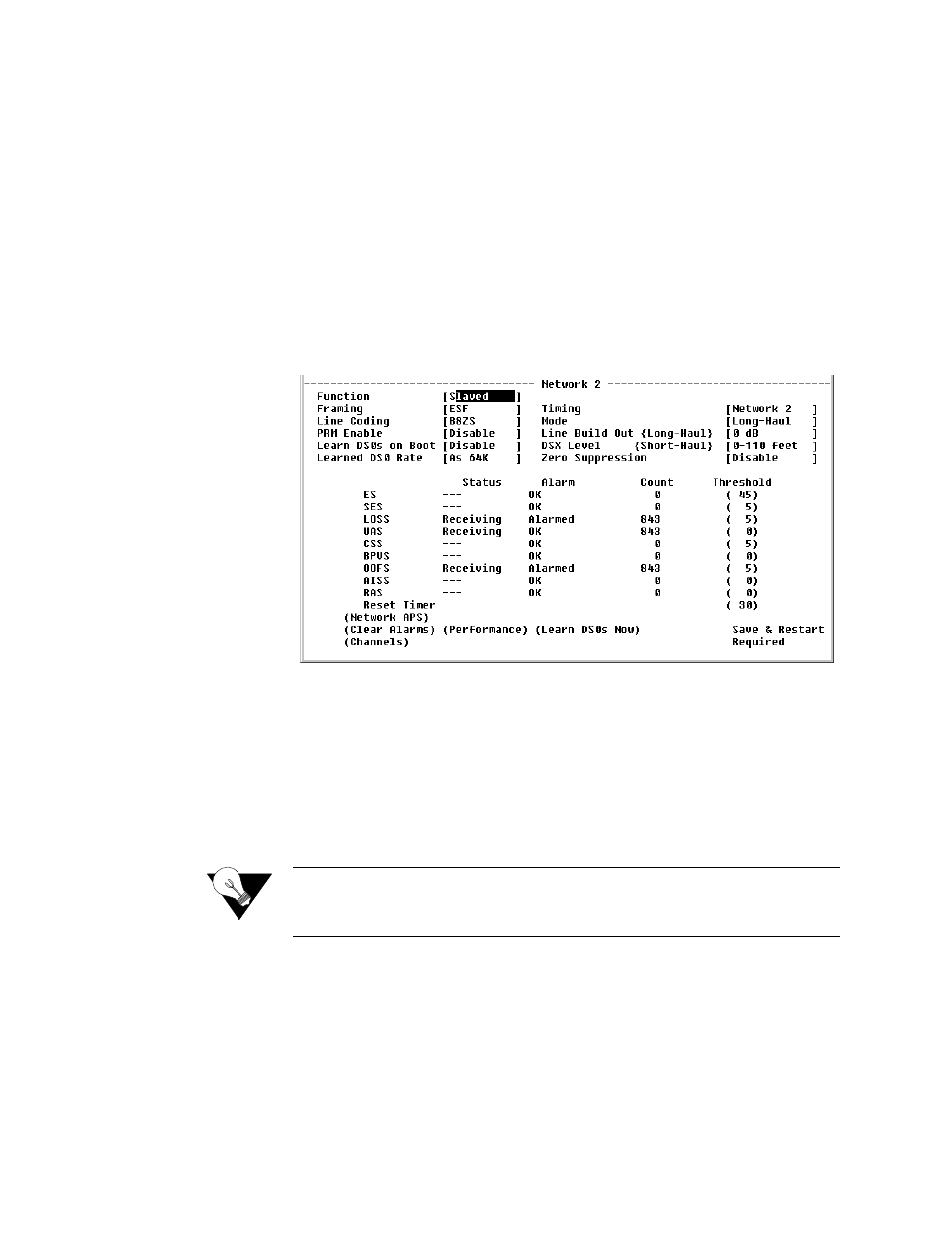Network screens, Network screens -7 – Verilink WANsuite 7105 (34-00316.C) Product Manual User Manual
Page 141

V T 1 0 0 I n t e r f a c e
4-7
Network Screens
The Network 1, Network 2 (shown below in Figure 4.6), and Network 3
screens offer the same parameters except for the following: the “Function”
parameter is found only on the Network 2 screen, and the “Timing” parameter
is not included on the Network 3 screen. Because APS is configured in the
Network 2 screen only, there is an additional user-activated prompt, “Network
APS,” on the Network 2 screen that does not appear on either the Network 1
or Network 3 screen. All three Network ports operate in the long-haul or
short-haul mode. The Network screens let you view and make changes to the
Network interface's configuration as described below. In addition, these
screens provide a table that displays the alarm values for the Network
interface.
Figure 4.6
Network 2 Screen
Function (Network 2
Only)
In the “Slaved” function, Network 2 timing is slaved to Network 1 and the
port operates as a DSX like Network 3. In the “Network” function, Network 2
combines with Serial 2 to operate as an independent DSU/CSU. In the “APS
Backup” function, Network 2 becomes a shadow of Network 1 by functioning
as a backup line for Network APS.
Values: Slaved, Network, APS Backup
Default: Slaved
NOTICE:
The “Function” parameter fundamentally affects the operation of the
unit. Even though this parameter is found only on the Network 2 screen,
its setting affects all three Network ports and the Service table.
Framing
Selects the framing for the Network side of the DSU/CSU.
Values
ESF, D4
Default: ESF
Line Coding
Sets the Network side line coding.
Values: B8ZS, AMI
Default: B8ZS